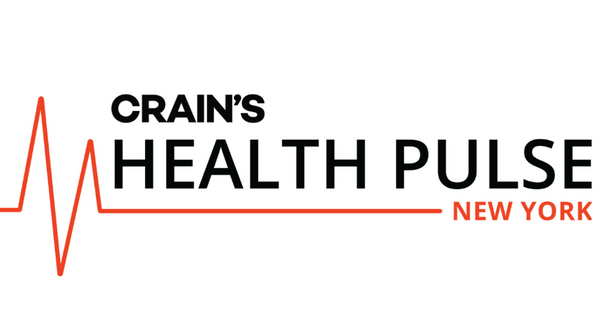
Life science real estate acquisition slowed in New York for the second quarter of 2023, a new report shows.
The report, published by real estate firm CBRE last week, illustrates that the city now has about 2.9 million square feet of laboratory and research and development inventory, compared to 2.5 million square feet for the second quarter of 2022. The city only has more inventory than Houston and Chicago.
Funding for the quarter dipped to just over $1 billion from nearly $1.5 billion for the same period last year. Vacancy rates, meanwhile, are at 37.5% for the quarter, lower than a record high rate at the beginning of this year but still significantly higher than the second quarter of 2022.
Asking rates averaged about $101 per square foot for the city overall and $110 per square foot in Manhattan.
These trends are reflective of a national cooldown, according to CBRE: vacancy rates rose nationally to 9%, monthly growth rates flattened and the sector’s employment numbers leveled out across the United States. However, national venture capital increased slightly.
John Isaacs, an executive vice president at CBRE and head of its New York life science practice, said the industry’s growth is now in check because higher interest rates have made it harder to raise money. Additionally, city landlords are more educated on life science real estate, where many companies need to move into buildings quickly and set up research right away. With their new knowledge, landlords are no longer spending extraneous sums to attract tenants, he said.
However, he continued, these negative trends can be deceiving. They bely an uptick in New York institutional research being commercialized–he mentioned NYU, Mount Sinai and Columbia–and more life science startups partnering with big pharmaceutical companies.
“The market is clearly not as soft as the office market, not at all,” Isaacs said.
According to the report, New York University took 15,000 more square feet of space in Long Island City, the second-largest transaction of the quarter behind Graviton Biosciences, which became the first tenant of West End Labs on the Upper West Side.
Additionally, New York remains near the top of the market with Boston for fiscal 2023 National Institutes of Health funding, at $1.7 billion for the quarter. Columbia University Health Sciences has the largest share–$362 million–with NYU, Mount Sinai, Cornell and Memorial Sloan Kettering following suit. Another recent CBRE report shows that New York’s life science research workforce is strong, with more students entering the commercialization space and choosing to stay in New York over other cities than in the past.
Furthermore, Isaacs added, less competition among companies compared to larger cities gives New York firms a clearer pathway for commercializing and spinning out of research institutions, which contributes to the health of the ecosystem.
Experts have long said New York’s academic environment buoys its life science industry, and going forward will be no exception, Isaacs said. While the city “will never be a 30 or 40 million square feet market like Boston,” its combination of intellectual capital and venture capital have set New York up for continued growth.
Additionally, he said, the city is at the midpoint of the “25 years it takes to build a cluster.” The city’s ecosystem is made up of mostly early-stage companies that have sought pre-built out lab space to move into, he said. As more firms look to go commercial, they will continue to search for “speculative” space, or buildings that include both lab and office space that can support their work, he added. The vacancy rate for pre-built out labs was only 11% this quarter, the report said, signaling higher demand.
“It’s essential that these lab buildings have exactly what office buildings they need. Great amenities, they need great infrastructure, they need landlords that understand the business,” Isaacs added. “Five years ago, we didn’t have these sophisticated landlords.”
There is about 459,000 square feet of lab and research and development space for three projects under construction in the city, with none pre-leased, that will be available for firms in the future. —Jacqueline Neber
Hochul grants $22M to substance use treatment providers and organizations
Gov. Kathy Hochul announced $22 million in grants for substance use treatment providers and community organizations across the state on Friday to fund programs that provide addiction recovery, harm reduction and social support services.
The funding will be administered by the Office of Addiction Services and Supports, and comes from the state’s opioid settlement funds.
More than $12 million in funding will support Recovery Community and Outreach Centers, which are non-clinical facilities that provide peer support to people in recovery from substance use disorders. The administration granted money to more than two dozen centers across the state, all of which have an operating budget under $535,000, to raise their budgets to that amount for two years.
Additionally, $6.6 million will go towards the state’s “Connections to Care” program, which connects people in priority populations to long-term addiction recovery care. Eleven providers will each receive $200,000 a year for three years to serve communities including pregnant and postpartum people, youth, older New Yorkers and people who were formerly incarcerated.
The administration also provided funds to support the development of community prevention coalitions, groups that aim to address opioid, fentanyl and prescription drug misuse. The coalitions mitigate misuse through several initiatives, such as distributing drug destruction kits and medication lock boxes to at-risk groups, and educating communities on risks of substance use and treatment. Each of the coalitions—based in the counties of Ulster, Dutchess, Greene, Sullivan and Chautauqua—will receive up to $200,000 annually for four years.
New York state will receive more than $2.5 billion in opioid settlement funds in the coming years. —Amanda D’Ambrosio
Columbia Nursing receives $5M to research Black women’s health
The National Institutes of Health awarded Columbia Nursing $5 million towards research focused on preterm birth in Black pregnancies.
One of the studies will explore the impact of music intervention on stress during pregnancy and the other will look into racism’s effects on gene expression.
Elizabeth Corwin, Ph.D, the vice dean of strategic and innovative research at Columbia Nursing, located in Washington Heights, received $3.4 million from the National Institute on Minority Health and Health Disparities for a five-year study that will test whether a 10-week live music intervention can reduce stress and the risk of preterm birth in pregnant Black women. The trial represents the first-ever randomized controlled trial of a live music intervention to improve birth outcomes among Black women.
“All the research that has gone into preterm birth, especially among Black women, has not worked,” Corwin said. “It has remained stubbornly high for decades and it doesn’t seem to be getting better, so we’re trying something new.”
Accompanied by Joanne Loewy, director of the Louis Armstrong Center for Music and Medicine at Mt. Sinai Beth Israel in East Village, the two will compare how music intervention affects metabolic pathways and inflammation. The study will begin in two weeks and will recruit 140 pregnant Black women.
The randomized trial will include a music therapist who will either sing a cultural song with the participant, or partake in casual conversation. The study aims to measure the impact of chronic stress through both a self report and biological indicators. Corwin said that chronic stress is associated with cortisol production which stimulates inflammation, an initiator of preterm birth.
The funding covers the recruitment efforts, the staff and the stipend awarded to participants. It also covers transportation costs to participants and the analysis of measuring cortisol metabolites.
Assistant professor of nursing, Veronica Barcelona, Ph.D, received $2.1 million from the Eunice Kennedy Shriver National Institute for Child Health and Human Development. The five-year study will look at previously collected data from the Nulliparous Mothers to be Study, which completed in 2015 and followed 10,000 women throughout their pregnancies with questionnaires about their experiences with racism and biological samples.
“Little is known about how racism, experienced at both individual and structural levels, interacts to produce preterm birth, and how racism gets ‘under the skin’ and the molecular mechanisms leading to preterm birth,” Barcelona said.
Barcelona said the current study, which started in March, will analyze preterm birth rates in Black and White women through the lens of individual and structural racism. The study will use a scale to assess degrees of individual and structured experiences of racism. The measures will be used to examine how racism is associated with epigenetic changes in stress genes and if it leads to preterm birth in Black women.
The NIH funding will primarily support the epigenomic analyses of the stored DNA, as well as salaries of the researchers, according to Barcelona.
“Our study will provide a foundation for future interventions at both individual and community levels to prevent preterm birth,” Barcelona said. “The study will contribute important knowledge related to the mechanisms underlying perinatal inequities in this country and inform policy change to reduce racism and improve health.” —Ana Altchek
Weill Cornell gets $3M grant to study inflammatory bowel disease
The National Institutes of Health has awarded a $3.26 million, five-year grant to a physician at Weill Cornell Medicine to study underlying mechanisms of inflammatory bowel disease, with a focus on inflammation caused by a molecule called tumor necrosis factor.
Dr. Gregory Sonnenberg, the head of basic research in gastroenterology and hepatology at Weill Cornell Medicine, received the award and based his proposal on his previous research of key immune cell pathways in the intestine, specifically tumor necrosis factor.
TNF is usually beneficial for patients, but in some people the cell pathway can perpetuate chronic inflammatory diseases, Sonnenberg said. Some current therapies block TNF to lower inflammation, but are only effective for some patients and can wane over time.
However, Sonnenberg’s team discovered in previous research that TNF-induced gut inflammation correlates with the depletion of a certain class of cells abundant in the healthy intestine.
“This provoked a hypothesis that these cells are keeping the TNF molecule in check and stopping it from driving tissue inflammation,” Sonnenberg said.
The NIH grant will support further exploring preclinical models that confirm those cells are essential to protect the intestine from TNF-related damage. The preliminary research outlined in the proposal aims to collect 50 patient biopsies for further analysis on the role of TNF in gut inflammation and damage.
Sonnenberg said that Weill Cornell has acquired thousands of experimental samples over the last eight years from patients who have agreed to give biopsies while undergoing colonoscopies, for varying research purposes. The current study will replicate the same method in acquiring samples and will put them in a culture dish to model different experiments and test hypotheses.
The grant will cover the preclinical mouse model studies that model complex human cell culture and patient samples from the biopsies. Sonnenberg said this will take four or five years to complete and he expects to extend the research study for an additional five years once the experimental findings become more concrete, which this category of NIH funding allows.
Through studying the factors that contribute to this inflammation, Sonnenberg intends to eventually find a therapy to treat inflammation in the gut.
The Method for Extending Research In Time grant is one of about 15 annual awards given by the National Institute of Allergy and Infectious Disease, a subset of the NIH. —A.A.
AT A GLANCE
EMERGENCY STAFF: The New York City Health + Hospitals board of directors voted to approve a contract with Midtown-based medical provider DocGo on Thursday to provide clinical and support staff for health emergencies. DocGo will provide time-sensitive, short-term staff to H+H Emergency Response Alternative Care Sites, or ERACS, which offer New Yorkers with special medical needs a place to go in extreme weather events and other crises. Staffing costs will be reimbursed by city, state and federal agencies. The contract, which will start on August 1, was approved for an initial three-year term with two one-year renewable options.
PROGRAM EXPANSION: New York City Health + Hospitals has expanded its Hepatitis C navigation program to nine of its 11 hospitals, the health system announced Friday, with the inclusion of H+H/Lincoln, Metropolitan and Woodhull. The expansion will allow H+H to test more patients; navigators connect patients with treatment and support them until they are cured. The goal of the program is to end the infection epidemic in the city. H+H estimates that about 1,500 patients in the system currently have uncured Hepatitis C.
CONTRACT EXTENSION: The city Department of Social Services has awarded Praxis Housing Initiatives Inc. almost $2 million to extend its contract to provide non-emergency transitional congregate housing and support services to New Yorkers who receive HIV/AIDS Services Administration services. The current contract was extended to avoid delaying services for clients. Praxis Housing Initiatives is based in Chelsea and provides housing and case management for New Yorkers living with HIV, AIDS, substance use disorder and mental health challenges. The proposed contract term would last through June 30, 2024.
WHO’S NEWS: The “Who’s News” portion of “At a Glance” is available online at this link and in the Health Pulse newsletter. “Who’s News” is a daily update of career transitions in the local health care industry. For more information on submitting a listing, reach out to Debora Stein: [email protected].
CONTACT US: Have a tip about news happening in the local health care industry? Want to provide feedback about our coverage? Contact the Health Pulse team at [email protected]




